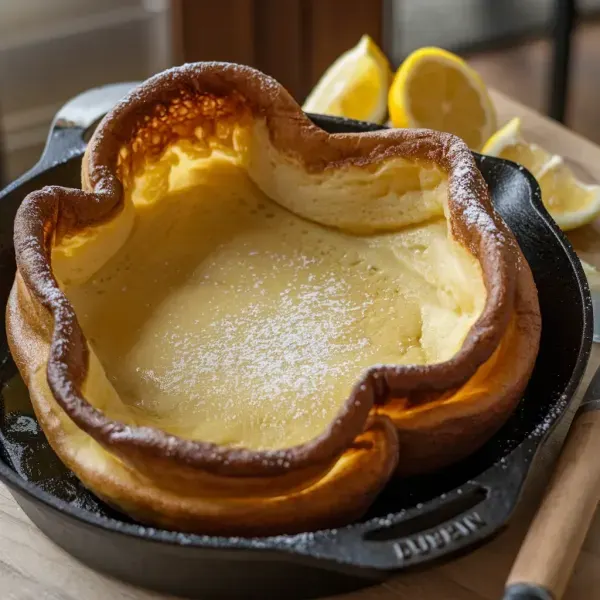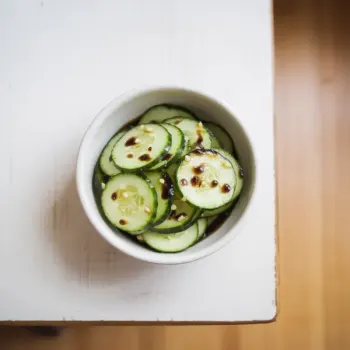
 40 minutes
40 minutesA delightful, puffy pancake that's perfect for a special breakfast or brunch.


Large Eggs, at room temperature
each
cups
Whole Milk, at room temperature
cups
tablespoons
pinches
tablespoons
Syrup, for serving
to taste
Preserves, for serving
to taste
Confectioners’ Sugar, for serving
to taste
Cinnamon Sugar, for serving
to taste
1. Preheat Oven
Start by preheating your oven to 425 degrees Fahrenheit. This high temperature is crucial as it helps the Dutch Baby puff up beautifully.
2. Prepare Batter
While the oven is heating, take the eggs, flour, milk, sugar, and a pinch of nutmeg, and blend them together. This can be done in a blender or by hand, but make sure the batter is very smooth and lump-free. A silky batter will ensure your Dutch Baby has the perfect texture.
3. Melt Butter
Next, place a heavy 10-inch skillet on the stovetop and melt 4 tablespoons of unsalted butter over medium heat. Keep an eye on the butter to ensure it doesn’t burn. Once melted, the butter will coat the skillet, preventing sticking and adding a rich flavor to the pancake.
4. Bake Dutch Baby
Pour the batter into the hot skillet and immediately transfer it to the oven. Bake at 425 degrees Fahrenheit for about 20 minutes. The high heat will cause the batter to puff and turn a beautiful golden color.
5. Reduce Heat
After 20 minutes, reduce the oven temperature to 300 degrees Fahrenheit and bake for an additional 5 minutes. This step ensures the center is fully cooked without over-browning.
6. Serve
Remove the skillet from the oven and cut the Dutch Baby into wedges. Serve immediately with your choice of syrup, preserves, confectioners' sugar, or cinnamon sugar. Enjoy the delightful, puffy texture and rich flavor of this classic treat!
For the best rise, ensure that all your ingredients, particularly the eggs and milk, are at room temperature. This helps the batter mix more uniformly and aids in a more dramatic puff as the pancake bakes.
Place the skillet or the pan you're using in the oven as it preheats. A hot pan helps the batter start cooking as soon as it hits the surface, which is essential for the characteristic rise.
Use a blender to mix your batter. This will not only save you time but also create a smooth, lump-free mixture that incorporates air, contributing to the puffiness of the pancake.
Resist the urge to open the oven door while the Dutch pancake is baking. The consistent heat is crucial for the pancake to puff up. Opening the door could cause a sudden temperature drop and deflate your masterpiece.
Dutch pancakes are known for deflating quickly, so have your toppings ready and serve the pancake as soon as it comes out of the oven to enjoy its full glory.




Comments (0)